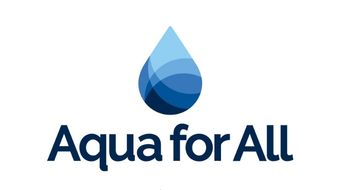Author: Aishwarya Pramod, Accelerator and Investment Manager at Toilet Board Coalition
Per a 2020 report by Water Aid, only 3% of global climate finance goes to the WASH sector, across both adaptation and mitigation. This is a very small number!
New breakthroughs? In November 2022, COP 27 finally mentioned “water” in its decisions, emphasizing “the importance of protecting, conserving and restoring water and water-related ecosystems, including river basins, aquifers and lakes” and urging parties to “further integrate water into adaptation efforts”. However, we still lack universal metrics to capture what this adaptation looks like. Luckily, the sector as a whole is advocating hard to identify-next Global Goals for adaptation at COP 28 this year.
What can WASH entrepreneurs do to prepare? As advocacy continues, WASH entrepreneurs should parallelly speak the language of climate adaptation and mitigation. Below are a few pointers entrepreneurs can use to build a narrative and communicate their climate impact.
1: Mitigation: how does your business model reduce emissions?
Mitigation: The waste sector contributes 3.2% of global greenhouse gases (GHGs), and is a big contributor to methane – significantly more potent than CO2. On the other hand, 70% of climate finance goes to mitigation activities. Therefore, it is important to communicate how your business model helps reduce GHGs. Multiple companies in the Toilet Board Coalition Accelerator do it, be it through capturing biogas, or even through replacing traditional chemical fertilizers and fuels with waste-derived ones.
Another point is infrastructure longevity. Unfortunately, in WASH, it is all too common to see crumbling toilets, treatment units and sewage lines, forced to be abandoned due to lack of proper use and maintenance. This necessitates the development of new infrastructure, that could generate significant emissions in the process of construction.
So, if your business maintains existing infrastructure, retrofitting it to increase longevity or otherwise generating value, please talk about it! For example, our cohort companies use IoT for preventive maintenance, innovate business models like micro-entrepreneurship to ensure maintenance, and use materials like recycled plastic that do not succumb to damage. They are also saving water, electricity and more. Additionally, another portfolio company is developing flushable sanitary pads that capitalize on existing sewage networks, obviating the need for incineration, transportation, composting or other processing infrastructure.
2: Adaptation: how does your business model help build resilience to climate change?
Adaptation: Adaptation means getting ready for the climate events already here and on the horizon – 74% of them experienced through too little or too much water. Climate-resilient infrastructure is the need of the hour.
Climate change causes fluctuations and variations in temperatures, water availability, and water and wind levels. It can increase the frequency of extreme weather events like droughts and floods in places that did not see them earlier.
Emphasize how your solutions will help communities build resilience and adapt: For example, some of our cohort build waterless toilets that will continue to function in times of drought, and allow for precious water to be diverted to other pressing uses. On the other hand, floods and storms can disrupt power supply. In this regard, innovative entrepreneurs have developed treatment solutions that can function with minimal electricity. In flood situations, it’s important that untreated waste is contained so it doesn’t compound the climate event with infectious disease breakouts. The Green Climate Fund’s project design guidelines (pages 16 – 24 and 40 – 47) list approaches entrepreneurs can take to enumerate the risks and adaptation strategies.
Emphasize your impact on vulnerable populations: Climate adaptation is especially critical for populations that are more vulnerable to climate change. Factors like high poverty, inequality, and lack of institutional support mean that climate hazards have a severely negative impact. People faced with such challenges are often unable to cope with such destructive events. There is a big overlap between the global population that already lacks access to basic sanitation, and those that are vulnerable to climate change. Therefore, we must recognize the importance of businesses operating in this critical confluence – providing basic services, as well as building up the services’ and communities’ capability to tackle extreme climate events.
Per IPCC, the most vulnerable regions are East, Central and West Africa, South Asia, Micronesia and Melanesia, and Central America. Businesses can demonstrate their commitment to impact by highlighting their work in such vulnerable geographies. It is also good if a business can demonstrate its alignment and contributions to that nation’s climate aims and goals.
The involvement, consultation and empowerment of vulnerable population subsets – such as women, indigenous people and minorities – also strengthens the impact case. When understanding and communicating the impact of your business on vulnerable populations, please consider diverse stakeholders, ranging from customers, employees, immediate communities, and wider citizens.






